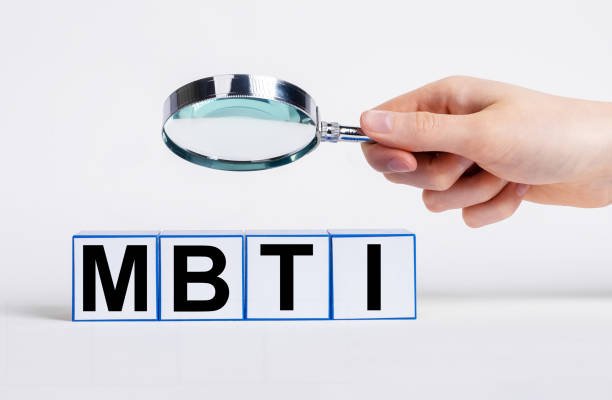Hey there, curious reader! Are you interested in learning about the 16 Myers-Briggs Type Indicator (MBTI) types? You’re in the right place! In this article, we’ll take a dive into the fascinating world of MBTI and cover all 16 types.
Understanding MBTI Basics
Before we jump into the different types, let’s quickly brush up on some MBTI basics.
The Four Dichotomies
The MBTI is based on four dichotomies or pairs of opposite preferences. These dichotomies are the building blocks of the MBTI types.
Extraversion vs. Introversion
Do you feel energized by social interactions or prefer solitude? This dimension explores how people gain energy—whether it’s from being around others (extraversion) or spending time alone (introversion).
Sensing vs. Intuition
This dimension is all about how you take in information. Sensing types prefer concrete, factual information, while intuitive types lean more towards abstract concepts and patterns.
Thinking vs. Feeling
How do you make decisions? Thinking types rely on objective analysis and logic, while feeling types prioritize emotions and personal values.
Judging vs. Perceiving
This dimension deals with your approach to the outer world. Judging types like structure and planning, while perceiving types are more adaptable and spontaneous.
Now that we have a basic understanding of the four dichotomies, let’s dive into the 16 MBTI types!
The 16 MBTI Types in Detail
The 16 MBTI types are divided into four categories: Analysts, Diplomats, Sentinels, and Explorers.
Analysts
INTJ – The Architect
Do you love strategizing and have an innate ability to see the bigger picture? You might be an INTJ. These individuals are logical, analytical, and private, often thriving in intellectual pursuits.
INTP – The Logician
INTPs are known for their innovative thinking and thirst for knowledge. They’re natural problem solvers who love exploring new ideas and theories.
ENTJ – The Commander
Bold and strategic, ENTJs are natural-born leaders who excel at organizing people and resources to achieve a goal. They’re decisive, confident, and assertive.
ENTP – The Debater
Are you a devil’s advocate who enjoys challenging the status quo? ENTPs are known for their quick wit, curiosity, and ability to see multiple sides of an issue.
Diplomats
INFJ – The Advocate
INFJs are idealists who are driven by their values and a strong sense of purpose. They’re empathetic, insightful, and often feel a deep connection to humanity.
INFP – The Mediator
Do you have a rich inner world and a strong moral compass? INFPs are imaginative dreamers who are guided by their values and a desire to make the world a better place.
ENFJ – The Protagonist
ENFJs are natural leaders who are skilled at inspiring others and bringing people together. They’re charismatic, empathetic, and genuinely care about helping others reach their full potential.
ENFP – The Campaigner
Free-spirited and enthusiastic, ENFPs are energetic individuals who thrive on exploring new ideas and possibilities. They’re social butterflies who love to connect with others and share their passions.
Sentinels
ISTJ – The Logistician
Do you value order, responsibility, and tradition? ISTJs are dependable and practical individuals who are committed to fulfilling their duties and maintaining stability.
ISFJ – The Defender
ISFJs are warm, caring individuals who are dedicated to helping others and maintaining harmony. They’re reliable, observant, and have a strong sense of duty.
ESTJ – The Executive
Organized and assertive, ESTJs are natural managers who excel at creating order and structure. They’re decisive, efficient, and always have a plan in place.
ESFJ – The Consul
Are you a people person who thrives in social situations? ESFJs are warm, empathetic individuals who are deeply invested in the well-being of others and maintaining social harmony.
Explorers
ISTP – The Virtuoso
ISTPs are hands-on learners who love to explore and understand how things work. They’re adaptable, curious, and have a knack for solving practical problems.
ISFP – The Adventurer
Do you have a strong appreciation for beauty and a deep love of aesthetics? ISFPs are sensitive, artistic individuals who value personal expression and enjoy exploring the world around them.
ESTP – The Entrepreneur
ESTPs are energetic, action-oriented individuals who are always on the lookout for new opportunities and experiences. They’re adaptable, resourceful, and have a keen sense of their surroundings.
ESFP – The Entertainer
Fun-loving and sociable, ESFPs are natural performers who love to be the center of attention. They’re spontaneous, enthusiastic, and always up for a good time.
Conclusion
There you have it – an overview of the 16 MBTI types! Understanding your type and the types of others can help you gain insight into your strengths, weaknesses, and preferences, making it easier to navigate the complexities of life.
Frequently Asked Questions
1. What is the purpose of the MBTI?
The MBTI is a personality assessment tool designed to help people understand their psychological preferences and how they interact with the world.
2. Can my MBTI type change over time?
While your core preferences are likely to remain stable, your behaviors and attitudes may evolve as you grow and learn. It’s possible to develop skills and traits that are not typical for your MBTI type, but your underlying preferences will likely stay consistent.
3. How can I find out my MBTI type?
You can take an official MBTI assessment administered by a certified practitioner or try a free online test. Keep in mind that online tests may not be as accurate as the official assessment.
4. Can MBTI be used in the workplace?
Yes! MBTI can be a valuable tool for team building, leadership development, and improving communication. By understanding different personality types, coworkers can better appreciate each other’s strengths and work more effectively together.
5. Is one MBTI type better than another?
Absolutely not! Each MBTI type has its unique strengths and weaknesses. The key is to understand and appreciate the differences between types, allowing each individual to shine in their own way.





Leave a Reply